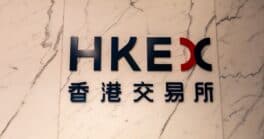Devika Kornbacher, co-chair of Clifford Chance’s Global Tech Group, speaks to Global Finance about technology regulation, lawsuits over generative AI and the global landscape for technology.
Global Finance: What is the state of case law around generative artificial intelligence (AI) and its derivative products? Writers are filing lawsuits against companies behind the largest generative AI engines for not getting permission to use their content for training purposes. Where are we in the game?
Devika Kornbacher: The New York Times case is the seminal case that everybody’s paying attention to. The complaint and defenses have changed. Any foundational model needs something to be trained on to be useful—that’s just a fact. If you train it on a small universe, that’s all it’s going to give you. If your goal is to have accurate, fulsome, smart generative AI, you need to train it on everything, but then there’s the issue of intellectual property (IP), copyright and compensation. We have to fight this out to figure out the rules.

These cases raise several critical questions. For instance, one side says they’re not violating copyright because they read the website and learned from it, and then moved on. Then the argument became it’s fair use and not reading. The complaints and defenses are changing before the game has even started, and there isn’t enough case law to reliably predict how this will play out.
GF: How does the lack of case law affect innovation of generative AI?
Kornbacher: That’s our challenge. There’s a lot of regulation that’s not in force yet, like the EU AI Act. Those looking to innovate technology have moved on and are playing by their own rules. While there are parts of the world that decide to restrain innovation through subpoenas, other parts of the world are afraid they’ll fall behind. China already has regulation, innovation and a plan. In other countries, there’s a dissonance between case law, regulation and innovation.
GF: Is there a country that’s more like the Wild West with regards to technology innovation, meaning there’s little regulation?
Kornbacher: Some would argue the US is the Wild West when it comes to innovation—everybody’s doing everything—but we have some enforcement. Another area from a legislative perspective is China. China has shown more decisiveness in how to run the race while the rest of the world is still thinking about how we should run it. China has regulations and rules that are in effect, and told people to go develop the technology. Meanwhile, Europe, the US, and other parts of Asia are still trying to figure out that balance.
GF: As companies develop their technology, they try to understand how business and regulation is different when they cross borders. What are the key issues for companies in this area?
Kornbacher: There’s the fear of missing out because one company will see what another company is doing, and they race to stay in the game. When it comes to generative AI in particular—because companies have been using AI as machine learning and analytics for some time—the fear is top of mind. In reality, however, most are in the same spot. Many of the companies that are publicly talking about their technology don’t have a viable version in production yet.
Once companies realize that their competition isn’t that far ahead of them, they have to adjust their risk management program. In financial services, companies have a global risk management team, and they have to figure out the risks with AI from these regulations and who owns managing the risks that are presented to the organization by the use of AI. Regulations don’t always clearly define who’s at fault if something goes wrong and whether that’s the user of the AI tool or the provider of the AI tool. Companies also struggle with how they talk about the enterprise and governance framework, and whether they should have a principles-based approach for their enterprise or a detailed, step-by-step procedure for compliance.
GF: Is AI regulation worthwhile? What might be the reason for not having any regulation?
Kornbacher: From a regulatory perspective, you can’t develop a global solution that dictates what the whole world needs to do because every government works differently.
The EU has always worked in a way where if there’s an issue, they develop a very comprehensive bill and then pull in all the member states. That’s how the regulation works—it comes from on high, it’s promulgated, and then people start designing programs toward it.
The US won’t have something that comes out fast and is comprehensive, and the US doesn’t have comprehensive regulation on AI. There’s an executive order which doesn’t regulate down to every component but offers direction for a lot of agencies. Current regulations are being used by many of these agencies and other agencies enforce against the use or development of AI that is deemed to be out of bounds. That works for the US.
Now, let’s go somewhere where the government has been shifting for years and where there may be the ability to pass legislation quickly. You have to consider both the regulation getting passed quickly and if you actually have the people to enforce it. For privacy, Brazil passed legislation fast, but it kept getting delayed because there’s nobody to enforce it. In that region, you need to think through whether it’s urgent to get the regulation or to figure out how to actually enforce something, or maybe just use existing privacy laws and get more people to focus on AI. I don’t think racing to regulation is the right answer for everyone everywhere.
GF: What are the types of global regulation we could see going forward? What tech risks does this bring?
Kornbacher: The idea of global regulation or a treaty of some sort—I don’t see that happening imminently. There are global principles that are starting to take shape around accountability, safety and transparency that then make their way into the local regulations or even local enforcement.
Technology is developed regionally and even used and consumed regionally in some respects, making global regulation much more difficult. For tech risk, while technology is borderless, the risk will depend on the region. If a global company is developing a product that uses a piece of hardware with AI, and it uses developers and suppliers from a nation on a banned list, then the risk of embargoes increases. If the company doesn’t use that supplier, it’ll be behind because that’s where the technology is already done. The economic risk is missing out on what could be a multibillion-dollar market share over the next decade. All these risks are bundled with the tech risk.
GF: There was a big decline in merger activity over the past few years because of the economy, not regulation. But now the tables are turning, and it seems that tech regulation is standing in the way of some deals. How do you balance the need for regulation and for more dealmaking activity?
Kornbacher: During the dot-com bubble, every small startup was valued at $1 billion, and these were all going to change the world, but then the bubble burst. We went from that world to tech consolidation, the behemoths, Big Tech.
Big Tech happens through merger activity. Instead of developing technology in-house, they just buy it. We went through a world of tech consolidation and tech innovation, but regulation came in to say that companies are getting too big. Regulation can absolutely affect the way consolidation and merger activity happen. I do think we’re moving to a phase where Big Tech will be Big Tech, but buying everything will no longer be easy—trying to turn two Big Techs into one will become almost impossible. It doesn’t help that we’ve had some big breaches and misuse of information, which is then blamed on a company being too big.
Since you can’t watch all the corners, regulation will dictate what you need to do. So, I do think tech regulation will affect merger activity and how people think about it. Companies are going to be more thoughtful about their acquisitions than in previous iterations of the tech market.



